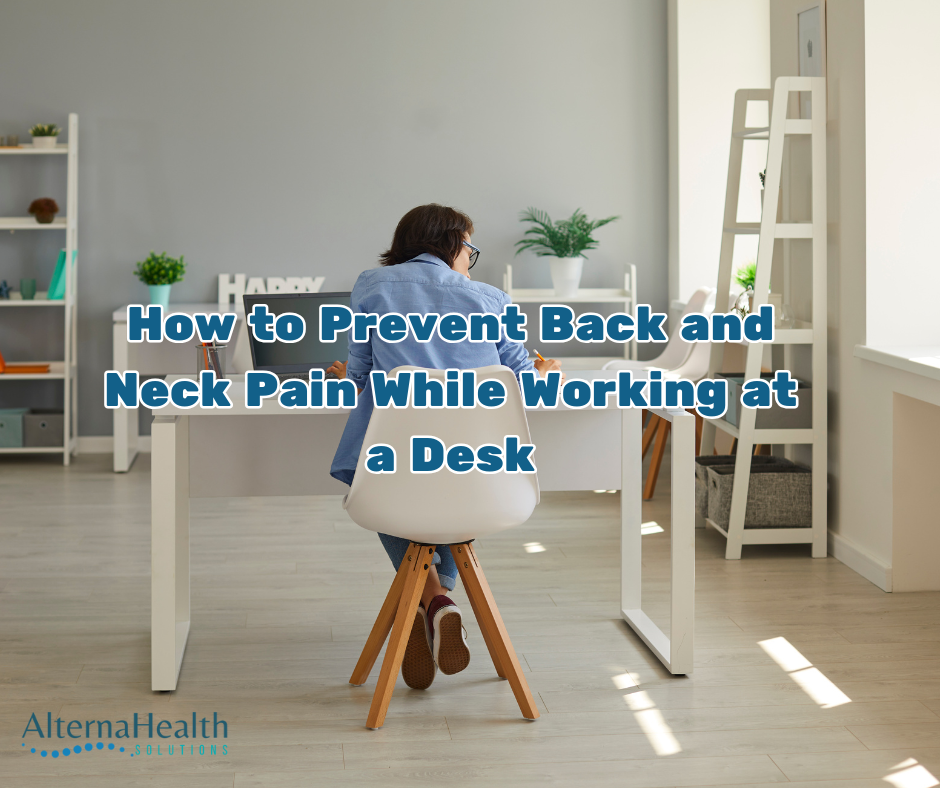How to Prevent Back and Neck Pain While Working at a Desk
- Olivia Sottile
- Mar 22
- 2 min read
If you spend hours at a desk, you’ve likely experienced back or neck pain at some point. Poor posture, prolonged sitting, and an improper workstation setup can lead to chronic discomfort. The good news? With a few adjustments, you can prevent pain and improve your posture while working.
Here’s how to keep your spine healthy and pain-free at your desk.

1. Set Up an Ergonomic Workspace
Your workstation plays a crucial role in preventing back and neck pain. Here’s how to optimize it:
Monitor Height: Position your screen at eye level so you're not straining your neck by looking down or up.
Keyboard & Mouse Placement: Keep them at elbow height, with wrists straight, to reduce shoulder and wrist tension.
Chair Support: Use a chair with lumbar support to maintain the natural curve of your lower back. Your feet should be flat on the floor or on a footrest.
2. Maintain Good Posture
Sitting with poor posture puts stress on your spine, leading to pain over time. Follow these posture tips:
Keep your shoulders relaxed, not hunched.
Sit with your back against the chair, avoiding slouching.
Align your head with your spine—don’t crane your neck forward.
3. Take Frequent Breaks
Sitting for too long can stiffen muscles and strain your back. Try:
The 30-Minute Rule: Stand, stretch, or walk around every 30 minutes.
Short Walks: A quick lap around the office or home helps improve circulation.
Stretch Breaks: Incorporate simple neck, shoulder, and back stretches throughout the day.
4. Use a Standing Desk (or Alternate Positions)
Switching between sitting and standing can reduce pressure on your spine. If a standing desk isn’t an option, try:
Using a stack of books or a laptop stand to raise your screen occasionally.
Sitting on a stability ball for short periods to engage core muscles.
5. Strengthen Your Core & Stretch
A strong core helps support your spine and reduces strain. Try:
Core exercises like planks or seated abdominal engagement.
Stretching routines for your neck, shoulders, and lower back to relieve tension.
6. Adjust Your Screen Time Habits
Too much screen time leads to “tech neck” and back strain. Reduce strain by:
Holding mobile devices at eye level to avoid looking down.
Reducing glare and increasing screen contrast to prevent leaning forward.
Taking eye breaks by following the 20-20-20 rule (every 20 minutes, look 20 feet away for 20 seconds).
Final Thoughts
Your desk job doesn’t have to lead to chronic back and neck pain. By making small ergonomic adjustments, maintaining good posture, and taking regular breaks, you can keep your spine healthy and pain-free.
Need extra relief? Chiropractic care can help realign your spine and prevent long-term damage. Book an appointment today to feel your best!
.png)









Comments